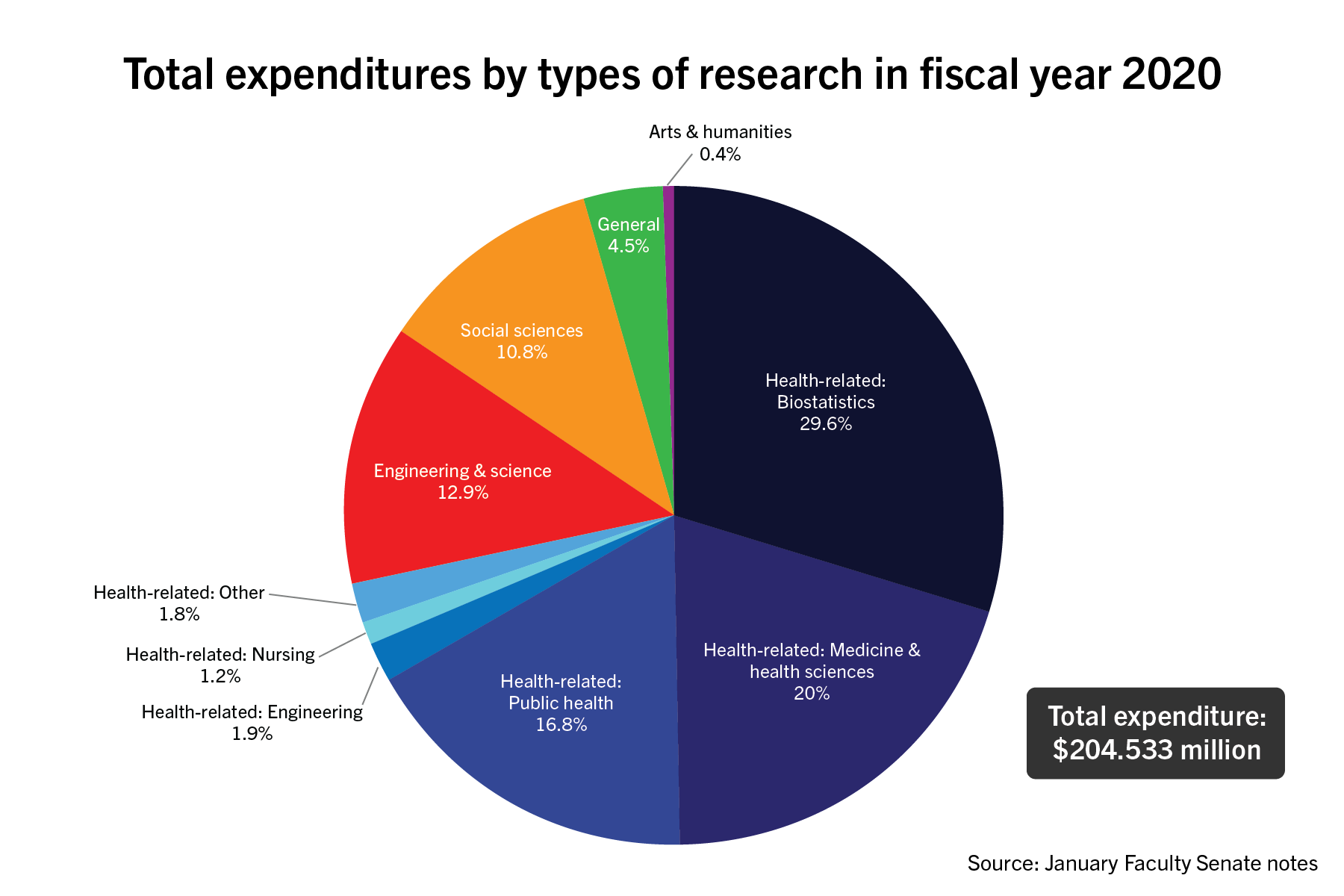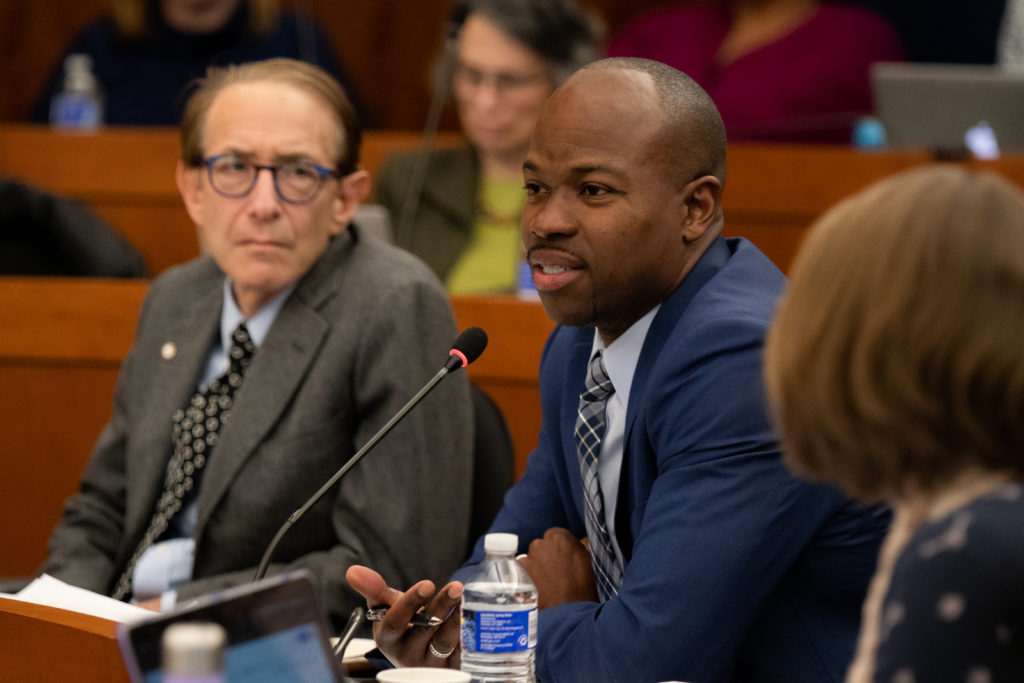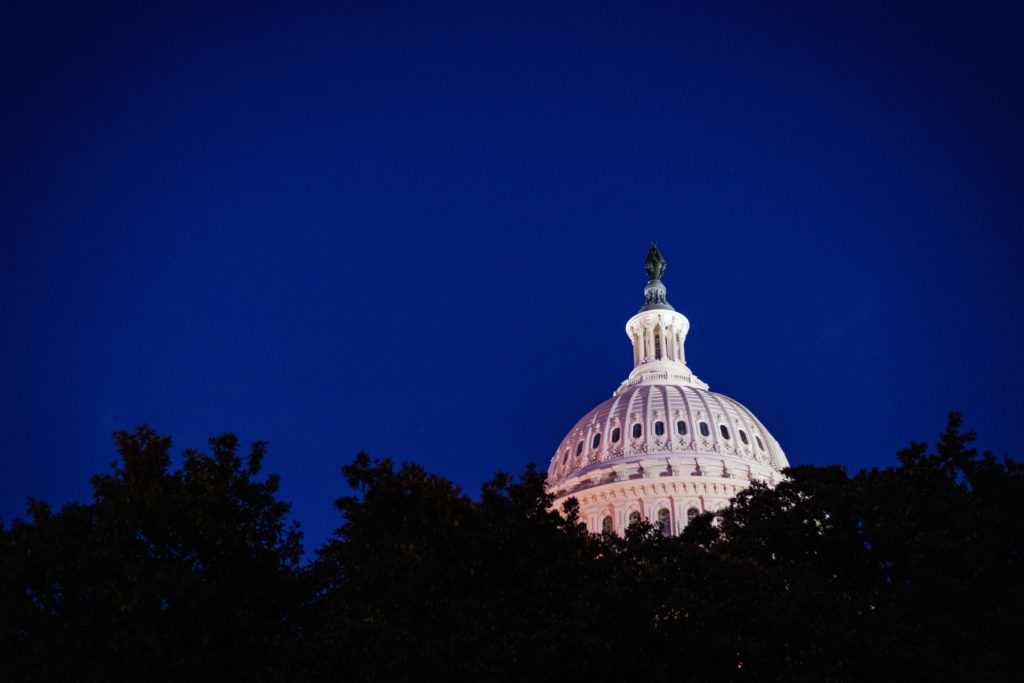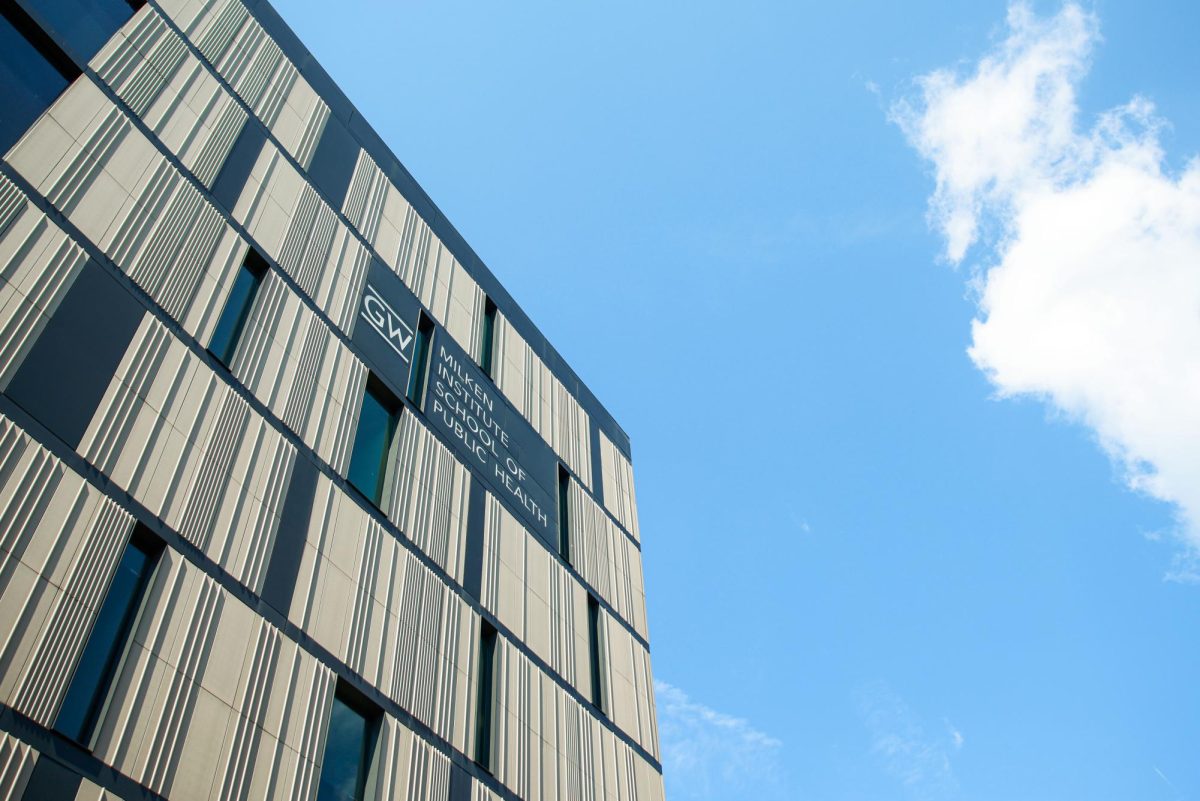Amid an all-time high in research expenditures fueled by the pandemic, experts said universities need to balance COVID-19 research and funding other projects.
The University disbursed a record high sum of $200 million to fund research efforts and notched a 10-year high in published work in 2020, officials announced at a Faculty Senate meeting last month. Research leaders at universities across the country said academic institutions need to prepare to differentiate themselves in the post-pandemic period by prioritizing non-virus-related research areas.

Sidney Lee | Graphics Editor
Provost Brian Blake said at the senate meeting earlier this month that he is focused on addressing the recommendations from the first phase of the University’s ecosystem review, a faculty-led review of GW’s research infrastructure, which will determine the next steps for strengthening GW’s research profile. The Phase 1 recommendations include adding more research spaces to campus and improving resource allocation across research projects.
“Our researchers, our faculty remain very ambitious,” Blake said. “I’m using the word ‘hungry’ because they’re still going after awards. They’re pushing us, and I absolutely welcome that push to make this infrastructure the best it can be, because I think the sky is the limit.”
GW boasted a spike in GW-authored documents this past year, rising from about 3,300 to about 4,000, according to data presented at the senate meeting. More than 70 percent of GW’s research expenditures this year consisted of health-related research, with science and engineering and social science research making up 13 and 10 percent of the output, respectively.
Edward Hackett, the vice provost for research at Brandeis University, said an increased volume of publications is a general trend at “rising research” universities like GW. He said limited access to labs and opportunities for in-person research may have contributed to the rapid rise in GW-authored documents.
“This could be a pandemic effect – more time spent writing because researchers have limited access to labs and ability to interact with human participants, which reduces the amount of new data gathered,” Hackett said in an email. “Researchers are spending more time writing up data and perhaps also writing proposals, particularly for pandemic-specific opportunities.”
Hackett said lab rooms at Brandeis could only operate at 25 percent capacity for much of the year, a contributing factor to research activities at universities taking “quite a blow” during the pandemic.
He added that higher education leaders are currently focused on COVID-19 but need to draft plans to prepare for when the pandemic becomes less prominent.
“When the pandemic quiets down, we can’t have every research university in the country working on the same set of problems,” Hackett said. “People are going to have to go back to what they were doing and are best at doing.”
Data presented at the faculty senate meeting also showed that GW’s research was cited nearly 50,000 times between 2017 and 2020 and is on a 10-year upward trend.
Hackett said citation numbers aren’t meant to be used as “evaluation metrics.” Comparing citation numbers is difficult because referencing practices vary across different fields of scholarship, he said.
“In practice, we think that the more citations a paper receives, the better, because papers are written to be read, their findings to be extended, their methods refined, their implications to be explored,” Hackett said. “Frankly, the worst thing that can happen to a paper is for it to be ignored.”
Kate Petcosky-Kulkarni, the director of strategic initiatives and interim chief of staff for the vice president for research and innovation at the University of Oregon, said universities should use clear and frequent communication with faculty to best manage both internal research restructuring, like GW’s transition to the pod model, and COVID-19 research.
“Any change in work that we do needs to involve lots of opportunities for stakeholder engagement, whether that’s research administrative staff or facility staff or faculty themselves, because everyone’s going to have different needs that need to be accommodated in the shift,” she said.
This summer, officials switched the University’s research organization model to a decentralized pod system, dividing research projects into three groups based on subject areas. Experts said the pod model could lead to growth in research output and encourage additional interdisciplinary collaboration.
Officials established an internal fund for COVID-19-related research projects in April, and the School of Medicine and Health Sciences and the Milken Institute School of Public Health have advised U.S. government officials on their response to the pandemic, like conducting a leg of the Moderna Inc. COVID-19 clinical trial.
Pramod Khargonekar, the vice chancellor for research at the University of California, Irvine, said universities have generally been “supportive” and “aggressive” in funding projects related to COVID-19 in both the social sciences and STEM fields.
“That is a very positive development, and I hope that continues beyond this pandemic, where the global research community comes together and advances on major problems by the sharing of information, data and knowledge,” he said.
Sejal Govindarao and Makena Roberts contributed reporting.








